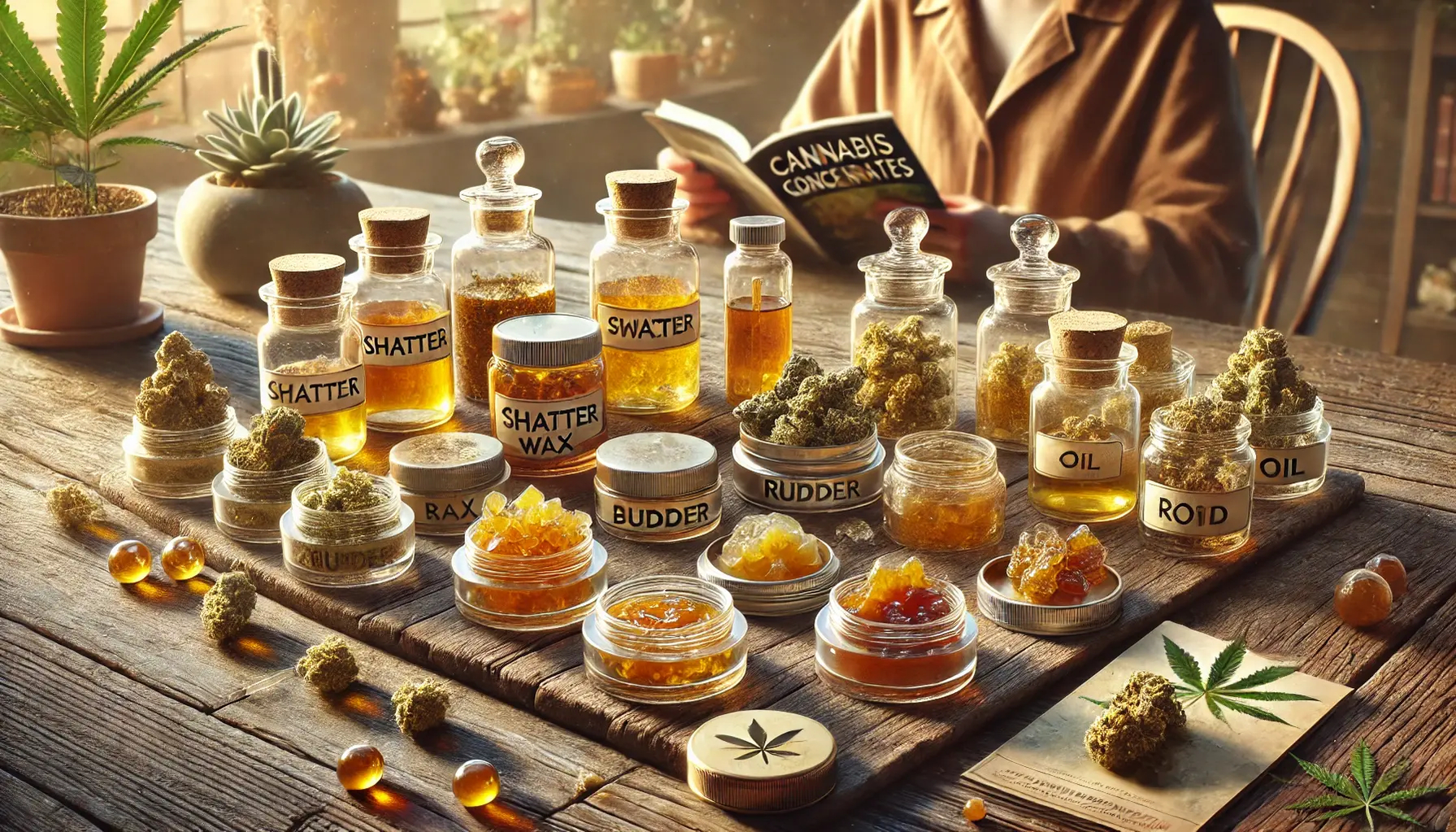Dabs Demystified: Why a Little Dab'll Do Ya

Everything You Need to Know About Cannabis Concentrates
If you've ever stepped into a dispensary and felt overwhelmed by terms like "live resin," "shatter," or "rosin," you're not alone. The world of cannabis concentrates has exploded in recent years, bringing new forms, new methods, and new experiences for cannabis enthusiasts. This guide will break it all down, helping you understand what cannabis concentrates are, how they’re made, and how to use them safely and effectively.
What Are Cannabis Concentrates?
Think of cannabis concentrates like orange juice concentrate – they're the essence of cannabis in a more potent form. While traditional cannabis flower might contain 15-30% THC, concentrates range from 60% to a staggering 99% THC. This potency makes a little go a long way, hence the nickname "dabs."
Types of Cannabis Concentrates
Cannabis concentrates come in many forms, each with unique characteristics that influence their use and effects. Here’s a breakdown of the most popular types:
-
Shatter: Imagine a thin sheet of amber-colored glass. That's shatter. It’s known for its transparency, brittle texture, and high potency, making it a favorite among experienced users.
-
Wax and Budder: These are the smooth operators of the concentrate world, with a consistency like soft candle wax or butter. Easier to handle than shatter, wax or budder might be a good entry point for those new to concentrates.
-
Live Resin: Live resin is made from flash-frozen cannabis plants rather than dried ones. Freezing preserves the delicate terpenes – compounds that give cannabis its unique flavors and effects – resulting in a highly aromatic and flavorful concentrate.
-
Rosin: The purist's choice, rosin is made without any solvents – just heat and pressure, much like squeezing olive oil from olives. It's the closest you can get to the natural plant while still being a concentrate.
-
Crumble: Dry and malleable, crumble is easy to handle and ideal for precise dosing.
-
Hash: A traditional concentrate made by compressing trichomes, known for its rich cannabinoid content and historical significance.
-
Sauce: A mixture of THCA crystals and high terpene content, sauce delivers intense flavors and potent effects.
-
Distillate: A refined extract that can reach up to 99% THC, distillate is often used in edibles, tinctures, and vape cartridges due to its lack of flavor and aroma.
Solvent vs. Solventless Extraction
The extraction process plays a major role in the quality, potency, and flavor of concentrates. Methods are generally categorized as solvent-based or solventless:
Solvent-Based Extraction:
-
CO₂ Extraction: Often used for vape oils, it efficiently preserves terpenes and cannabinoids.
-
Butane Hash Oil (BHO): A popular method for producing shatter, wax, and live resin, BHO extraction is known for its high THC content but requires careful purging of solvents.
-
Ethanol Extraction: Produces full-spectrum concentrates, retaining a variety of cannabinoids and terpenes.
Solventless Extraction:
-
Rosin Pressing: Uses heat and pressure to extract cannabinoids without chemicals, resulting in a pure, natural product.
-
Ice Water Hash (Bubble Hash): Made using ice water and mechanical agitation to separate trichomes, resulting in a potent and clean product.
Quality Indicators: What to Look For
When shopping for concentrates, consider these quality indicators:
-
Good Signs: Clear, amber color, consistent texture, absence of contaminants, proper packaging and labeling, and available lab test results.
-
Red Flags: Dark or green color (which may indicate poor extraction), unusual odors, inconsistent texture, and suspiciously low prices.
Potency and Composition
Cannabis concentrates have THC levels ranging from 60% to 99%, far exceeding the potency of traditional flower. Concentrates can be:
-
THC-Dominant: Producing strong psychoactive effects.
-
CBD-Dominant: Offering therapeutic benefits without significant psychoactivity.
-
Full-Spectrum Extracts: Containing a range of cannabinoids and terpenes for the "entourage effect."
-
Isolates: Pure extracts of specific cannabinoids, such as THC or CBD, with up to 99% purity.
Consumption Methods and Temperature Guidelines
Dabbing: Concentrates like shatter, wax, and live resin are typically used with dab rigs or vaporizers.
Vaping: Vape-friendly concentrates often come pre-loaded in cartridges, offering convenience and controlled doses.
Edibles: Decarboxylated extracts are ready for infusion into edibles.
Temperature Guidelines for Dabbing:
-
Low (315-450°F): Preserves terpenes, enhancing flavor.
-
Medium (450-600°F): Balances flavor and vapor production.
-
 High (600-700°F): Maximizes vapor production but can be harsh on the throat.
High (600-700°F): Maximizes vapor production but can be harsh on the throat.
Safety and Handling Tips
-
Proper Lab Testing: Ensure concentrates are free from contaminants and have accurate potency labeling.
-
Storage: Keep products in airtight containers at room temperature, away from light.
-
Consumption Safety: Start with small amounts, especially when dabbing, due to high THC levels.
Market Trends and Evolution
The cannabis concentrate market has evolved significantly over the last decade, with consumer preferences shifting toward lab-tested products, solventless extracts, and innovative consumption methods. THC potencies have risen dramatically, from an average of 6.7% in 2008 to over 80% in many modern products.
Final Thoughts: Which Side Are You On?
Whether you’re a curious newcomer or a seasoned enthusiast, understanding cannabis concentrates will help you make informed decisions. Are you team solventless, valuing natural purity? Or do you prefer solvent-based concentrates for their efficiency and variety? Either way, remember to start small, pay attention to quality indicators, and always purchase from reputable sources.
What’s your experience with concentrates? Let us know in the comments!